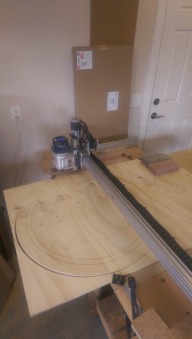myOX : a 4' x 2' OX with potential
Discussion in 'CNC Mills/Routers' started by Serge E., Jun 19, 2014.
myOX : a 4' x 2' OX CNC with potential
Discussion in 'CNC Mills/Routers' started by Serge E., Jun 19, 2014.
This is the story of me building myOX - my version of the "ideal" OX. I want a machine which can route/mill at least 4' wide and as long as I can feed through (don't be shy, think "infinity") as well as going deep on multiple faces - manual 4th axis. I have loads of ideas to take myOX towards that goal and way beyond. Time will tell. Just follow along through this build and possibly a few others along the way ... Check out my OXCalculator : let your computer figure out your BoM
Page 10 of 16
Page 10 of 16
